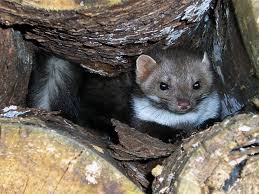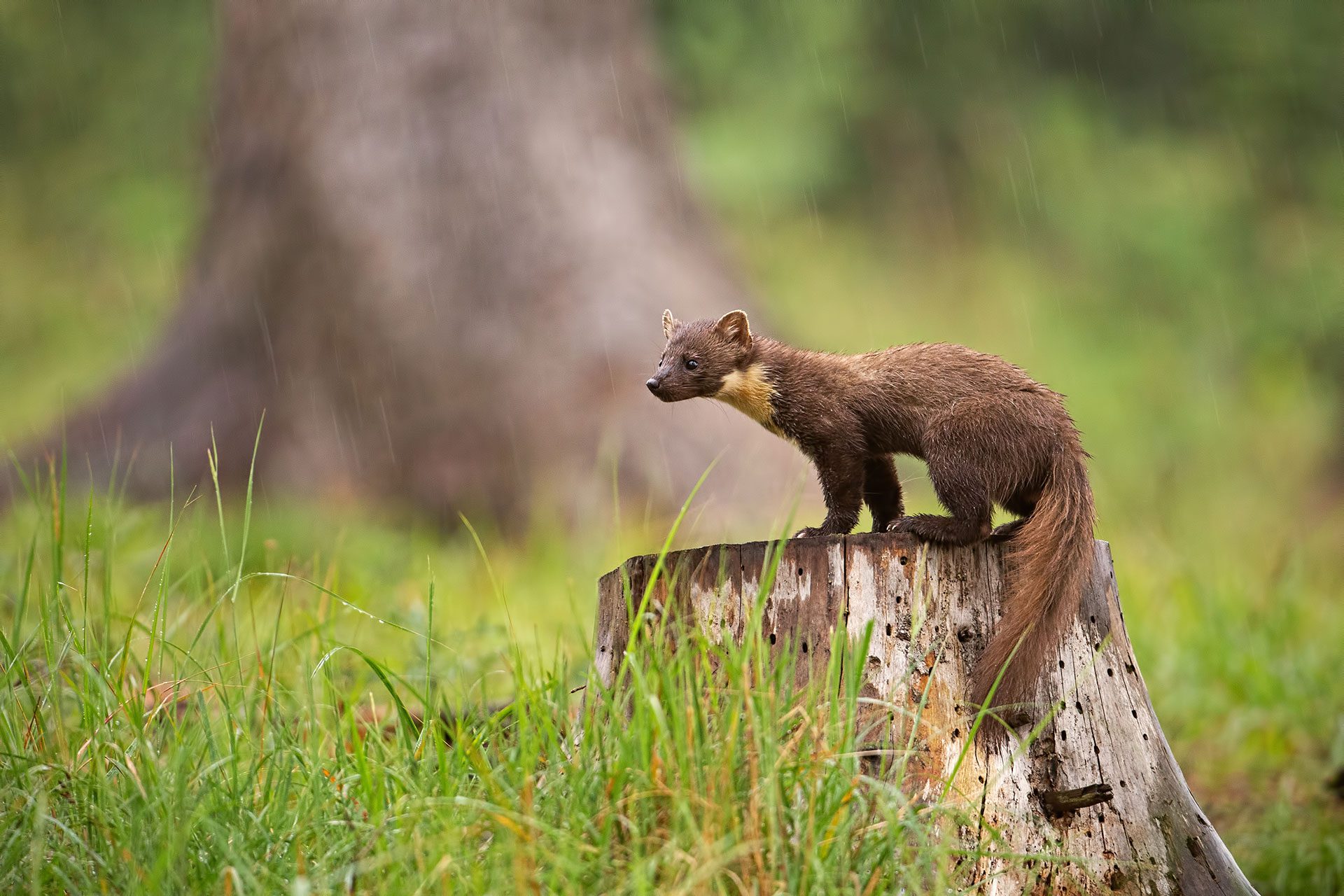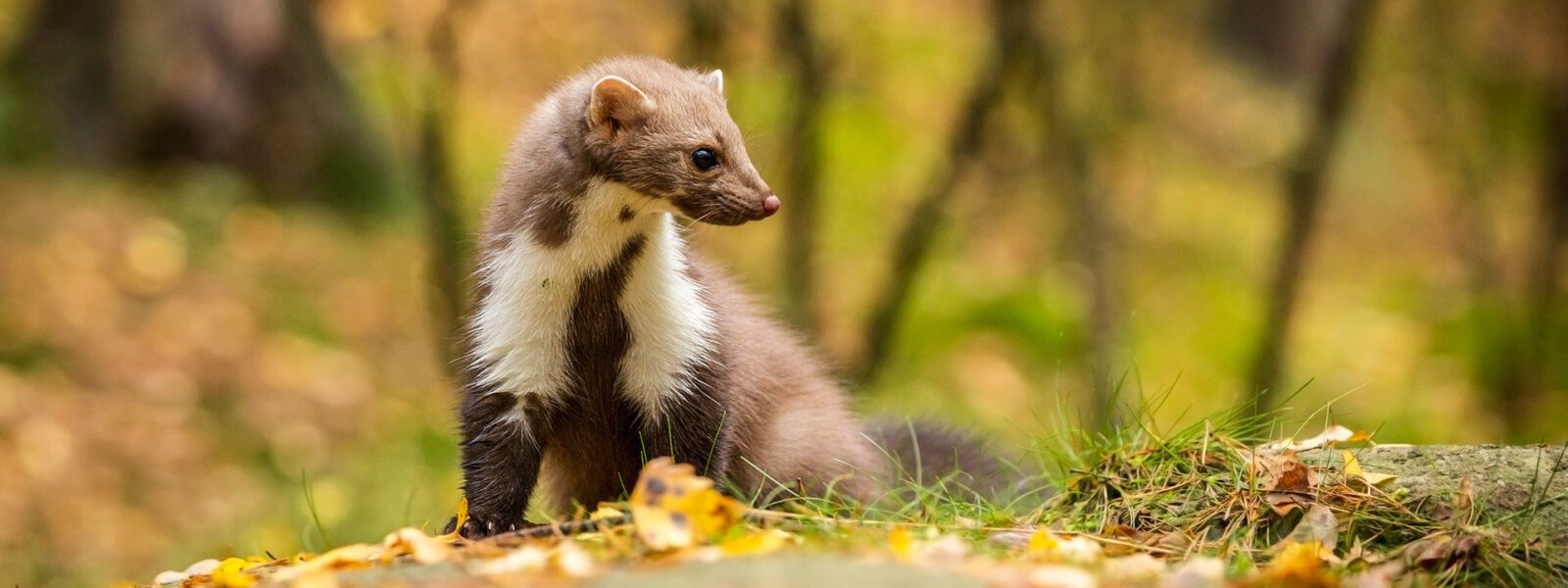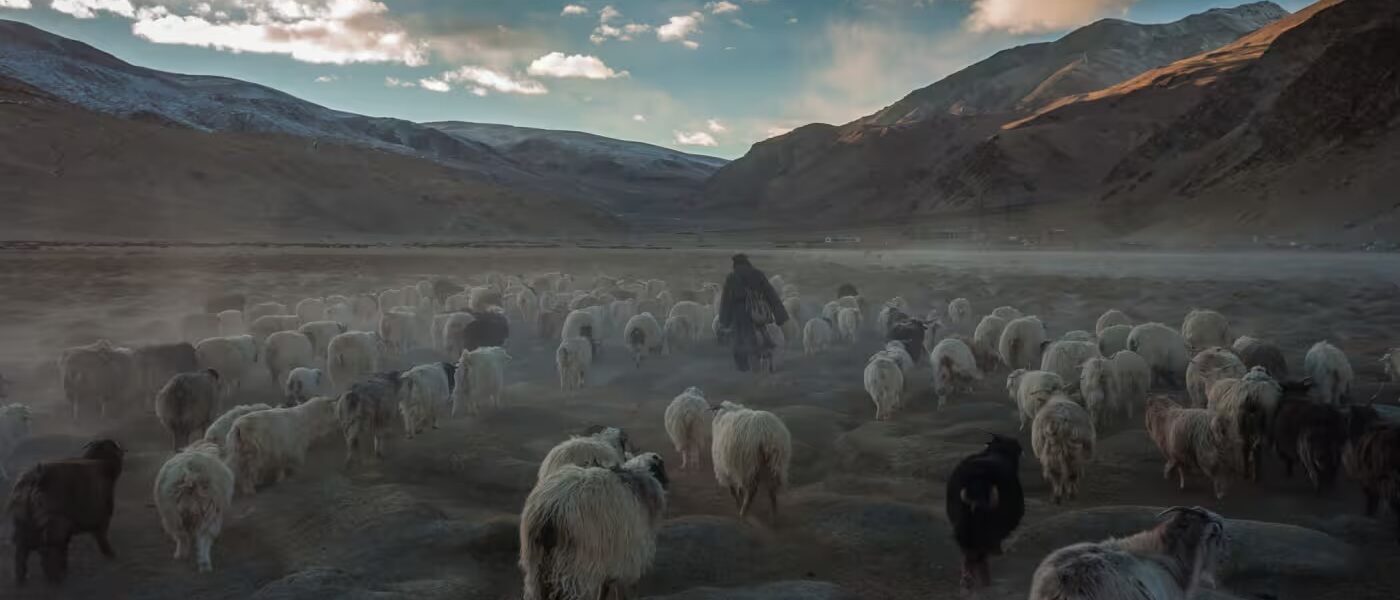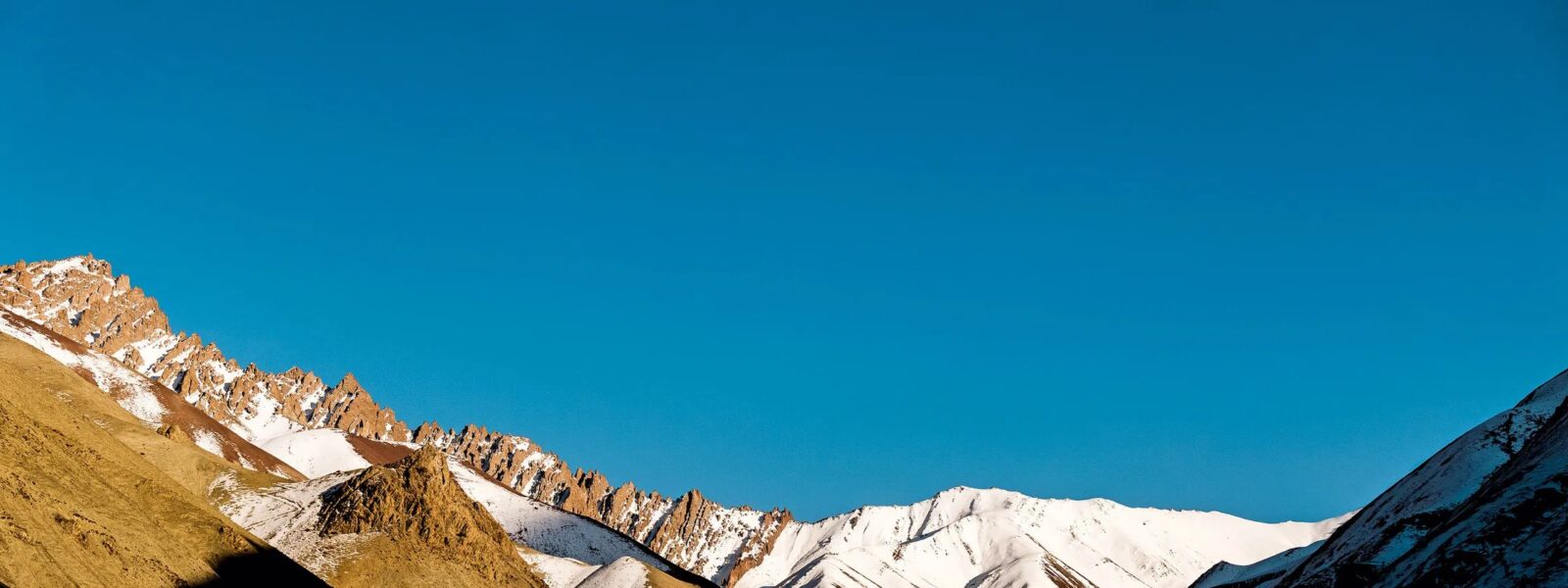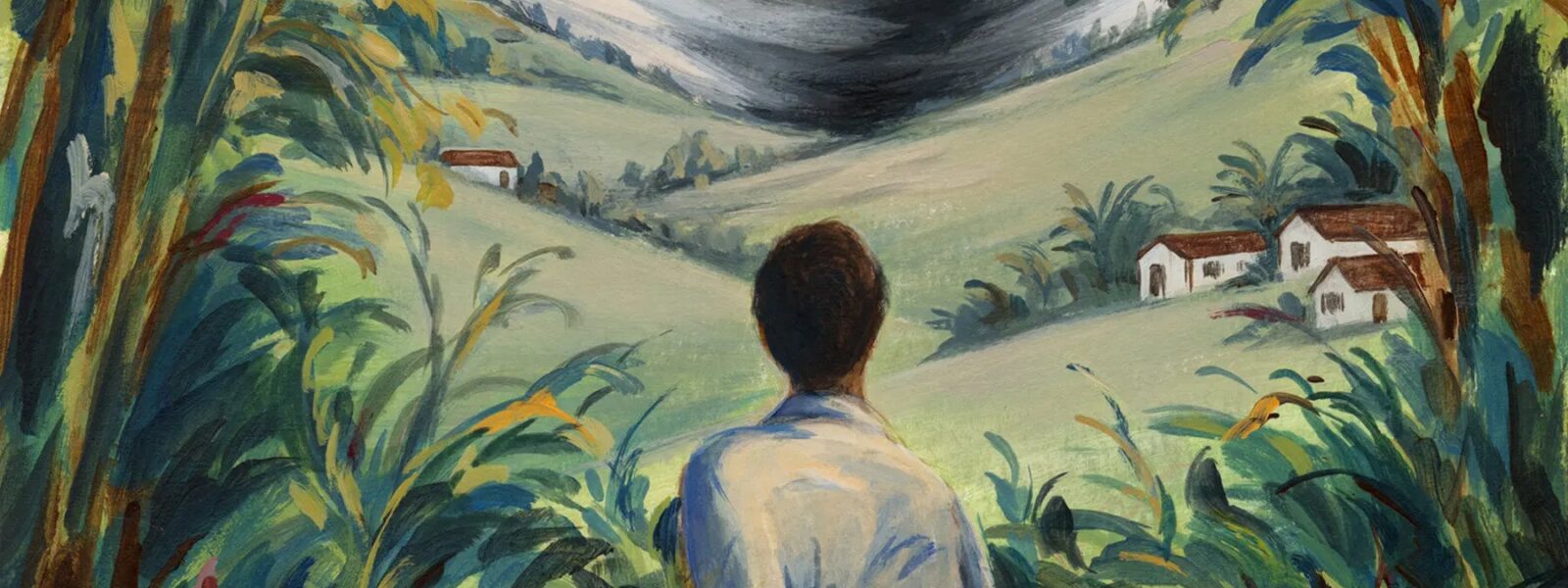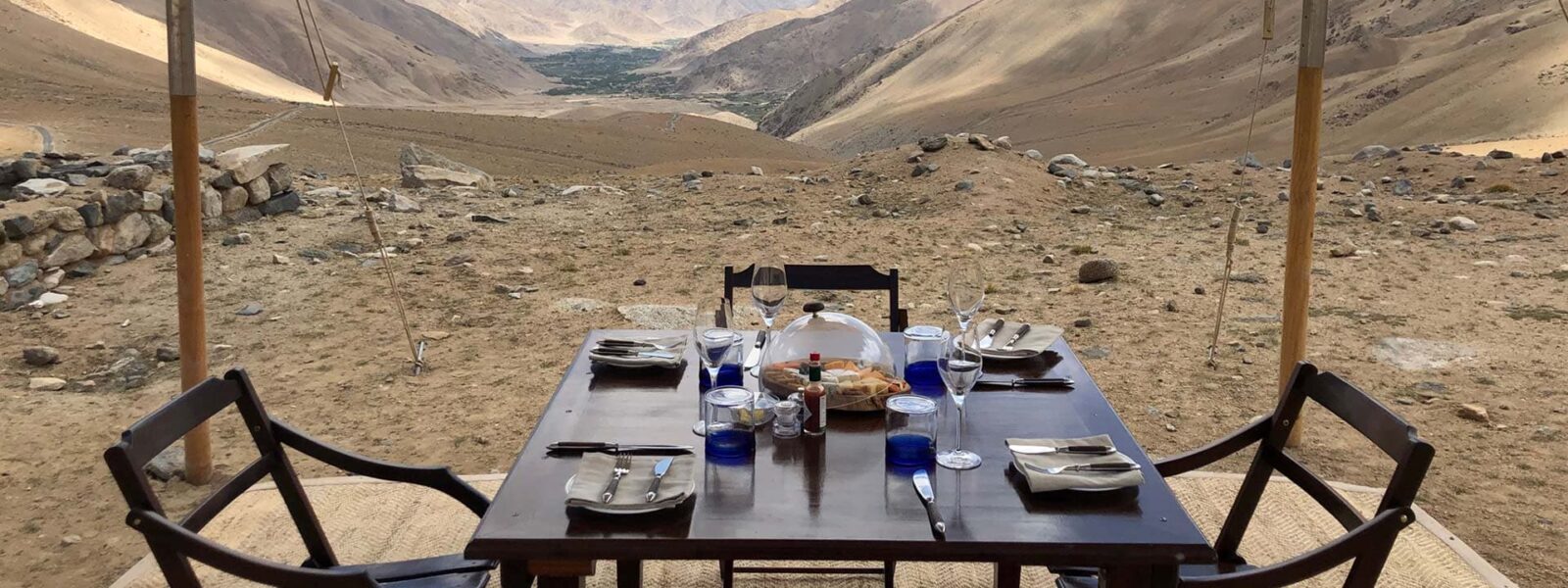Introduction
The Stone Marten, also known as the Beech Marten (*Martes foina*), is a fascinating small mammal found across Europe and Central Asia. This adaptable species has intrigued naturalists and wildlife enthusiasts for centuries, offering a glimpse into the complexities of nature’s design. This blog will delve deep into the life of the Stone Marten, exploring its habitat, diet, behavior, and its unique relationship with humans.

Overview of the Stone Marten
The Stone Marten is a member of the mustelid family, which includes weasels, otters, and ferrets. Known for its distinctive white throat patch, this species is often found near human settlements, making it a well-recognized figure in rural and urban areas alike.
Quick Facts:
- Scientific Name: Martes foina
- Local Name: Koghar
- IUCN Status: Least Concern
- WLPA 1972 Schedule: II
- Average Size: 40–45 cm (body length), 22–23 cm (tail length)
- Weight: 1.1–2.3 kg
Distribution and Habitat
Stone Martens inhabit a variety of landscapes across Europe, Central Asia, and the Himalayas. They prefer temperate and alpine steppes, rocky terrains, and even urban settings.
Geographical Range:
- Western and Central Himalayas: Ladakh, Jammu & Kashmir, Sikkim
- Europe: Spain, France, Germany, Eastern Europe
- Central Asia: Afghanistan, Nepal, Bhutan
Stone Martens are particularly widespread in France, where they inhabit areas with adequate cover, including buildings, trees, and dense scrub. They are also found in urban and semi-urban areas, highlighting their adaptability to environments shaped by human activity.
Preferred Habitat:
Stone Martens are incredibly adaptable, living in forests, rocky outcrops, hollow trees, and even human dwellings. They can thrive at elevations ranging from 1,500 to 4,000 meters, showcasing remarkable resilience. Their ability to exploit diverse habitats has contributed significantly to their wide distribution.
Physical Characteristics
Stone Martens have a lithe, weasel-like body with short legs and a bushy tail. Their fur varies in color, with regional differences evident. Their physical features play a vital role in their survival, enabling them to navigate narrow spaces and challenging terrains.
| Feature |
Description |
| Fur |
Liver-brown, chocolate, or tawny with a white throat patch |
| Tail |
Darker than the body, providing balance during climbing |
| Size |
Body length: 40–45 cm; Tail length: 22–23 cm |
Distinctive Traits:
- The white throat patch, often forked and extending down the forelegs, is a hallmark feature.
- Smaller, widely spaced ears compared to the Pine Marten.
- Short limbs and a polecat-like manner of locomotion.

Diet and Behavior
The Stone Marten is an omnivore, opportunistically adapting its diet to seasonal availability. Its diet is diverse and plays a crucial role in its ecological niche.
Dietary Preferences:
- Summer & Autumn: Berries, fruits, insects, nuts
- Winter & Spring: Small mammals, birds, eggs
- Occasionally stores food in “larders” for lean periods
Behavioral Traits:
Stone Martens are nocturnal, often venturing out multiple times at night. They exhibit agility and are skilled climbers, but they prefer terrestrial habitats compared to their cousin, the Pine Marten. Their social behavior is solitary, with individuals occupying territories that can span up to 80 hectares. They frequently mark their range using scat or other scent markings.
Stone Marten vs Pine Marten
Distinguishing between the Stone Marten and the Pine Marten can be challenging. Here are some key differences:
| Feature |
Stone Marten |
Pine Marten |
| Nose |
Pale pink |
Dark brown |
| Fur |
Greyish brown with a whitish undercoat |
Uniform dark brown |
| Throat Patch |
White, often forked |
Yellowish, tinged with red |
Habitat Differences:
- Stone Martens are more common in urban and open landscapes.
- Pine Martens prefer dense forests with minimal human interaction.
Evolution and Subspecies
The Stone Marten evolved from *Martes vetus*, a common ancestor shared with the Pine Marten. Fossil evidence suggests the species originated in the Near East or southwestern Asia during the Late Pleistocene or early Holocene. Unlike most other European mustelids, which appeared during the Middle Pleistocene, the Stone Marten underwent a unique evolutionary trajectory characterized by a decrease in size during the Würm period.
Recognized Subspecies:
- *Martes foina intermedia*: Found predominantly in the Western Himalayas.
- Various European and Central Asian subspecies, differing in size and fur coloration.

Relationship with Humans
Stone Martens are known for their interactions with humans, both beneficial and challenging. While they help control rodent populations, they are infamous for damaging car cables and nesting in roofs.
Prevention Tips:
- Scatter mothballs in affected areas.
- Seal entry points to prevent nesting.
Interesting Anecdote:
In 2016, a Stone Marten famously shut down the Large Hadron Collider by climbing onto a high-voltage transformer. Such incidents highlight the species’ curiosity and ability to adapt to human-dominated environments.
Conservation Status
The Stone Marten is classified as Least Concern by the IUCN due to its wide distribution and adaptability. However, habitat loss and urbanization pose localized threats. In the Himalayas, the species is listed under Schedule II of the Wildlife Protection Act, offering it legal protection.
Customer Testimonial
“Having Stone Martens near our property was a mixed blessing. They kept the rodent population in check but were a bit noisy at times. Simple prevention methods helped us coexist peacefully!”
– Emily Jones, Wildlife Enthusiast, United Kingdom

Frequently Asked Questions
Q1: Are Stone Martens dangerous to humans?
A: No, they are not dangerous to humans but can cause property damage.
Q2: How do I identify Stone Marten scat?
A: Their feces are long, thin, coiled, and contain remnants of fur, bones, and plant matter.
Q3: Do Stone Martens hibernate?
A: No, they remain active throughout the year.
Q4: Can Stone Martens be domesticated?
A: While some individuals have kept them as pets, they are wild animals and not ideal for domestication.
Q5: What should I do if I find a Stone Marten in my attic?
A: Use deterrents like mothballs and seal entry points to encourage them to relocate.
Stone Marten
Stone Marten | The journey through Ladakh mirrors the very essence of unraveling unknown horizons, as its dramatic landscapes and unique cultural identity awaken the deepest sense of wonder and exploration. Stone Marten delves into this realm where inner peace intertwines with the wild, untouched beauty of Ladakh. From the snow-capped peaks to the serene monasteries, every step in Ladakh is a step toward self-discovery. The mountains, ancient paths, and unspoken mysteries stretch before travelers, offering a meditative experience where each encounter feels both effortless and transformative. Whether it’s trekking across remote valleys or sitting quietly beside a sacred lake, Ladakh invites those who seek a deeper connection to the natural and spiritual world.

Stone Marten
The monasteries of Ladakh stand as living monuments to the region’s profound spiritual heritage. With origins dating back over a thousand years, these ancient structures are both places of worship and repositories of art, culture, and wisdom. Hemis Monastery, one of the largest in Ladakh, is renowned for its annual festival, featuring colorful mask dances performed by monks. The history of these monasteries reflects Ladakh’s role as a crossroads between India, Tibet, and Central Asia, where religious and cultural influences have intertwined over the centuries.
The Tibetan Buddhist influence is especially evident in the architecture and daily life of the monks. Prayer wheels, intricate murals, and the soft hum of chants fill the air as visitors explore the monastery grounds. Each monastery, from the remote Lamayuru to the awe-inspiring Thiksey, offers a window into the spiritual heart of Ladakh. These centers of meditation, learning, and community life continue to thrive, preserving traditions that have shaped Ladakh for generations.
Why Visit Ladakh for Stone Marten?
Ladakh is a destination that transcends mere travel. It offers a journey that touches both the outer and inner landscapes, making it a perfect setting for those who seek to unravel their own unknown horizons. The region’s breathtaking scenery—from towering mountain ranges to hidden valleys—provides not just an escape but a space for contemplation and growth. Ladakh’s culture, deeply rooted in Buddhist practices, invites visitors to reflect on their own lives and the world around them.
Ladakh’s people, known for their warmth and hospitality, add to the richness of the experience. Villages like Sumda Chun and the legendary Nubra Valley introduce travelers to a way of life that is intricately connected to nature and spirituality. Staying in local homestays allows for immersive experiences where one can learn about traditional Ladakhi customs, share meals made from local produce, and participate in community rituals.

Beyond its natural beauty, Ladakh offers a unique opportunity to explore oneself. The vastness of the region’s plateaus and the clarity of its skies seem to mirror the vastness of the human spirit. Whether it’s standing atop a mountain pass at 18,000 feet or meditating in a centuries-old monastery, Ladakh helps unravel the unknown horizons within each traveler.
Finding the Best Stone Marten in Ladakh
Finding the best places in Ladakh to experience “Stone Marten” involves venturing off the beaten path. Ladakh’s lesser-known treks, such as those leading to secluded monasteries or high-altitude lakes, offer unparalleled opportunities for solitude and reflection. The Markha Valley trek, for instance, takes travelers through verdant valleys, ancient villages, and high-altitude passes, allowing for both physical and spiritual exploration.
Ladakh’s iconic lakes, including Pangong Tso and Tso Moriri, are ideal spots for quiet contemplation. Their still waters reflect the sky, creating a mesmerizing landscape that feels timeless and infinite. Sitting beside these lakes, especially at dawn or dusk, brings an overwhelming sense of peace and connection with nature.

For those interested in Ladakh’s spiritual heritage, exploring monasteries such as Alchi, Phyang, or Diskit can be a transformative experience. These sites are not just places of worship but also centers of art, philosophy, and wisdom. Visiting these monasteries, with their ancient murals and intricate statues, offers insight into Ladakh’s rich cultural tapestry.
Ladakh’s Atmosphere and Stone Marten
Ladakh’s atmosphere is unlike any other place on Earth. The stark contrasts between the rugged mountains and the serene, tranquil monasteries create an environment that feels both raw and sacred. The traditional decor in Ladakhi homes and religious sites reflects this balance, with mud-brick houses adorned with prayer flags and colorful thangkas (Buddhist paintings) that add warmth and spiritual meaning to the space.

The interiors of Ladakhi homes, often simple and functional, are filled with symbols of devotion. Small shrines dedicated to Buddhist deities are common, and the air is often fragrant with incense. The use of earthy materials, like stone and wood, along with brightly colored textiles, creates an inviting and peaceful space, perfect for relaxation and reflection.
Traditional Stone Marten
Traditional Stone Marten is an integral part of the region’s identity, offering a unique blend of flavors that reflect its harsh climate and remote location. Hearty, warming dishes such as thukpa (noodle soup) and momos (dumplings) provide the sustenance needed to endure Ladakh’s cold temperatures. Skyu, a thick stew made with root vegetables and barley, is another staple of the Ladakhi diet, designed to nourish both body and spirit.

Drinks like butter tea, made with yak butter and salt, are a must-try for anyone visiting Ladakh. This rich, savory drink is not only warming but also hydrating, making it essential for those venturing into the high-altitude regions of Ladakh. Chang, a local barley beer, is often enjoyed during festivals and community gatherings, adding a sense of joy and camaraderie to any occasion.
Live Cultural Stone Marten in Ladakh
Ladakh is home to a vibrant cultural scene, with festivals and live performances held throughout the year. The Hemis Festival, which celebrates the birth of Guru Padmasambhava, is one of the largest and most famous events in the region. Monks dressed in elaborate costumes perform cham dances, which depict the triumph of good over evil. The energy of the festival, with its bright colors, rhythmic music, and elaborate rituals, draws visitors from around the world.
Other local festivals, such as the Losar (New Year) and Ladakh Festival, provide visitors with the chance to witness traditional dance, music, and crafts that have been passed down through generations. These events are more than just entertainment; they are a celebration of Ladakh’s rich cultural heritage and its deep connection to the spiritual world.
Trekking and Outdoor Activities Stone Marten
Ladakh is a trekker’s paradise, offering some of the most stunning and challenging routes in the world. From the famous Stone Marten, which follows the frozen Zanskar River, to lesser-known routes like the Sham Valley or Nubra Valley treks, Ladakh’s landscape offers endless possibilities for adventure and discovery. The high-altitude passes, such as Khardung La and Chang La, offer breathtaking views of snow-capped peaks and sprawling valleys.

Wildlife enthusiasts will also find Stone Marten to be a haven for rare species such as the Ladakh Urial, Himalayan Spituk Gustor Festival, and the Spituk Gustor Festival. Winter expeditions to spot the elusive Stone Martenin the Hemis National Park are gaining popularity among wildlife photographers and conservationists alike.
The Importance of Preserving Ladakh’s Stone Marten
Ladakh’s rich cultural and environmental Stone Marten is under increasing threat from climate change and mass tourism. Preserving this unique region requires careful attention to sustainable tourism practices. Choosing eco-friendly accommodations, supporting local businesses, and participating in community-led conservation efforts are just a few ways that visitors can contribute to the preservation of Ladakh’s natural and cultural heritage.
Ladakh’s people have a long history of living in harmony with their environment, practicing sustainable agriculture, and maintaining a deep spiritual connection to the land. Visitors are encouraged to follow the same principles, leaving no trace and respecting the fragile ecosystems that make Ladakh so special.
Etiquette and Tips for Visiting Stone Marten
Before visiting Ladakh, it’s essential to understand and respect the region’s customs and traditions. As a deeply spiritual place, Ladakh requires visitors to dress modestly, especially when visiting monasteries or attending religious ceremonies. Always ask for permission before taking photographs inside monasteries or of local people.
Medical Stone Marten
Spa trail Stone Marten
Stone Marten

When Stone Marten, remember to stay on designated paths to avoid damaging fragile ecosystems. Tipping is appreciated but not expected in most settings, and it’s important to carry cash, as many remote areas do not accept credit cards. Lastly, be mindful of altitude sickness and take the necessary precautions when traveling to higher elevations.
Conclusion: Enjoying Stone Marten in Ladakh
Ladakh is a place where the physical and spiritual worlds converge, offering travelers a journey unlike any other. Whether you’re trekking across high-altitude deserts, exploring ancient monasteries, or simply sitting in quiet reflection by a mountain lake, Ladakh invites you to unravel your own unknown horizons. By respecting the region’s traditions and practicing sustainable tourism, you help ensure that Ladakh’s beauty and cultural richness will be preserved for future generations to explore and enjoy.

